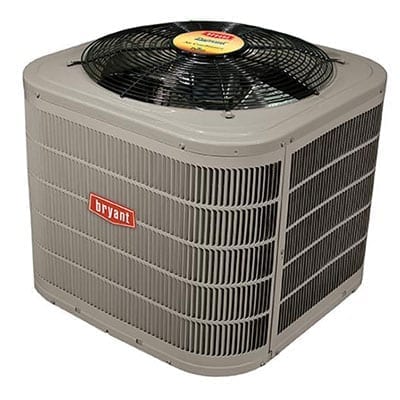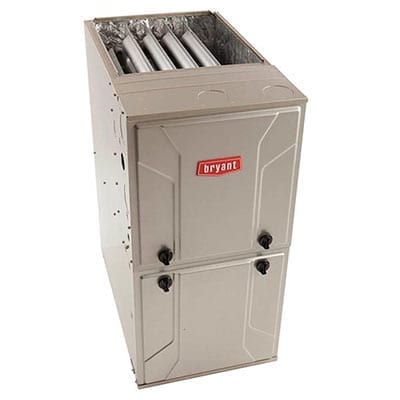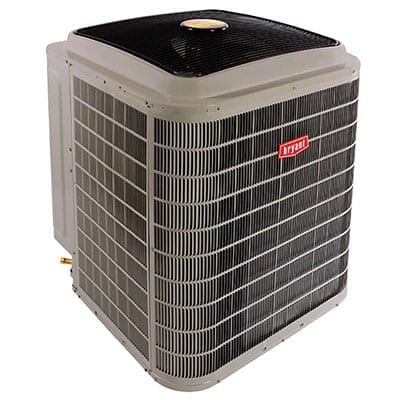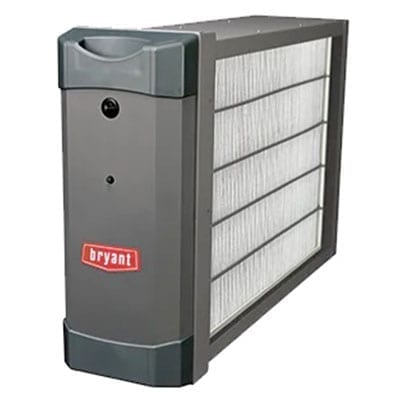Commercial HVAC for Gyms and Fitness Centers
Commercial HVAC systems are essential for maintaining efficient heating and a comfortable environment in gym facilities. These systems ensure that fitness spaces and locker rooms have the necessary indoor space to provide a healthy and enjoyable experience for gym-goers. These gym facilities solutions play a crucial role in ensuring optimal air quality, temperature control, and energy efficiency within the gym facility, creating an efficient heating system and a comfortable indoor environment for fitness centers. The unique challenges faced by gyms require efficient heating and specialized HVAC systems to meet their specific needs, making it essential for fitness facility owners to invest in tailored solutions that create a comfortable indoor environment. Heat recovery VRF systems are a great option for gyms. From managing high occupancy levels in fitness spaces to addressing diverse ventilation requirements in indoor spaces, commercial gyms rely on robust HVAC setups for uninterrupted operations. These setups ensure proper air renewal and utilize advanced technology.
Exploring Energy-Efficient HVAC Systems for Fitness Environments
Benefits of Efficient HVAC Systems
Installing energy-efficient HVAC systems in gyms and fitness centers can bring numerous benefits, such as substantial reductions in operating costs, improved air renewal, and enhanced health. This technology is a game-changer for these facilities. These efficient HVAC solutions are designed to optimize energy consumption in gym facilities, resulting in lower energy costs for fitness spaces. These systems also provide air renewal for the facility. For instance, advanced technologies such as variable refrigerant flow (VRF) systems offer efficient HVAC solutions with precise temperature control for gym facilities and fitness spaces while minimizing energy usage. By regulating the indoor environment of gym facilities more efficiently, these systems contribute to significant cost savings over time. They help maintain a fresh and odor-free space for gym-goers.
Efficient heating and air conditioning system installations play a crucial role in maintaining a comfortable workout environment for members at commercial gyms. These systems help eliminate odors and improve air quality, ensuring that gym-goers can exercise without distractions. Additionally, advanced technologies like iwave can further enhance the air quality by reducing harmful particles and bacteria. This creates a more pleasant and hygienic atmosphere for workouts, which can help reduce cortisol levels and promote overall well-being. The ability of these HVAC systems in gym facilities to provide consistent and optimal temperatures ensures that individuals can exercise comfortably regardless of external weather conditions. With the iwave technology integrated into the gym facility, it helps reduce cortisol levels and create a healthier environment for workouts.
Incorporating Smart Technologies
The integration of efficient HVAC solutions, such as Odorklenz and iWave, along with smart thermostats and occupancy sensors, further enhances the overall energy efficiency within fitness environments. Additionally, these solutions can also help reduce cortisol levels, promoting a healthier and more comfortable workout experience. Smart thermostats, like iwave, offer efficient HVAC solutions by automating temperature adjustments based on occupancy levels and usage patterns. This ensures that energy is not wasted when areas are unoccupied or during non-peak hours. Additionally, using odorklenz technology, these thermostats can also eliminate unwanted odors in the air. This proactive approach significantly reduces unnecessary energy consumption, contributing to long-term cost savings for gym owners. With iwave, this proactive approach significantly reduces unnecessary energy consumption, contributing to long-term cost savings for gym owners.
Moreover, iwave occupancy sensors help regulate airflow and temperature settings based on real-time activity within different sections of the facility. For example, if certain areas experience decreased foot traffic during specific times of day, the iwave sensors can adjust the climate control settings accordingly.
-
Pros:
-
Significant reduction in operating costs.
-
Optimal indoor environment maintenance.
-
Automated temperature adjustments based on occupancy levels.
-
Cons:
-
Upfront investment required for installation.
-
Potential need for professional expertise during implementation.
Heating and Cooling Options Tailored for Fitness Centers
Simultaneous Heating and Cooling Capabilities
Heat recovery ventilation (HRV) systems, like the iwave HRV, are an ideal solution for fitness centers as they provide both heating and cooling capabilities. These iwave systems optimize comfort in gym spaces by ensuring that the environment remains pleasant regardless of the outdoor temperature. For instance, during colder months, the HRV system recovers heat from the outgoing air and uses iwave to warm up the incoming fresh air, maintaining a comfortable indoor temperature.
Dedicated Outdoor Air Systems (DOAS)
Efficient Fresh Air Supply
In fitness environments, dedicated outdoor air systems (DOAS) with iwave technology play a crucial role in maintaining optimal indoor air quality while efficiently conditioning the indoor spaces. By supplying fresh outside air into the facility, the iwave DOAS ensures that gym-goers have access to clean and healthy breathing air throughout their workout sessions. This is essential for creating a comfortable and invigorating atmosphere within fitness centers with iwave.
Zoned HVAC Systems
Customized Temperature Control
The implementation of iwave technology in zoned HVAC systems allows for customized temperature control in different areas of the gym. This is particularly beneficial as it caters to varying workout intensities experienced across different sections of fitness facilities. For example, cardio areas may require cooler temperatures due to increased body heat generation from intense workouts, while yoga studios or relaxation zones might benefit from slightly warmer settings to promote relaxation and flexibility exercises.
The Critical Role of Ventilation and Air Renewal in Gyms
Importance of Proper Ventilation
Proper ventilation is crucial for maintaining a healthy environment within gyms and fitness centers. It plays a critical role in removing stale air, controlling humidity levels, and preventing the buildup of pollutants. In many gyms, the presence of numerous individuals engaged in physical activities leads to increased moisture and airborne particles, creating an environment that requires effective ventilation.
Adequate ventilation ensures that gym-goers breathe fresher air, promoting their comfort and well-being during workouts. Without proper ventilation systems in place, the indoor air quality can deteriorate significantly due to sweat, body odors, and other contaminants commonly found in fitness environments. Mechanical ventilation systems are essential for effectively exchanging indoor air with fresh outdoor air.
Benefits of Mechanical Ventilation Systems
Many gyms rely on mechanical ventilation systems to ensure optimal indoor air quality. These systems work by continuously renewing the air inside the facility with fresh outside air. By doing so, they help dilute contaminants present indoors while also regulating temperature and humidity levels. This exchange process helps create a more comfortable workout environment for gym members.
Moreover, mechanical ventilation systems equipped with high-efficiency particulate air (HEPA) filters play a vital role in capturing airborne particles such as allergens and pollutants commonly found in fitness environments. These filters are highly effective at trapping dust, pollen, mold spores, and other microscopic particles that could otherwise compromise indoor air quality.
Enhancing Air Quality with HEPA Filters
In many gyms today, the use of HEPA filters has become standard practice due to their ability to capture even tiny airborne particles effectively. By incorporating these filters into commercial HVAC systems, gyms can significantly reduce the presence of allergens, dust mites, and other potential triggers for respiratory issues among patrons. The implementation of HEPA filters not only contributes to maintaining cleaner indoor spaces but also promotes better respiratory health among gym-goers.
Addressing Odor and Air Quality Challenges in Fitness Spaces
Effective Odor Control Measures
Gyms and fitness centers often face odor and indoor air quality challenges due to the accumulation of sweat, moisture, and bacteria. Implementing effective odor control measures such as carbon filtration or ultraviolet germicidal irradiation (UVGI) can eliminate unpleasant smells in these spaces. For instance, using activated carbon filters in the HVAC system can effectively trap odorous compounds, ensuring that the circulated air remains fresh and clean. UVGI systems can help neutralize odors by targeting airborne microorganisms that contribute to foul smells.
Regular maintenance of HVAC systems is essential for ensuring good air quality within fitness spaces. This includes frequent cleaning of ducts, vents, coils, and drain pans to prevent the buildup of mold, mildew, and other contaminants that could compromise indoor air quality. Furthermore, timely filter replacement is crucial for reducing allergens and pollutants in gym environments.
Properly Designed Exhaust Systems
In addressing odor, it’s essential to have properly designed exhaust systems that efficiently remove pollutants generated by gym equipment and activities. These exhaust systems should be strategically positioned to capture contaminants at their source before they disperse throughout the facility. By promptly expelling stale air from workout areas with high-quality ventilation solutions like powerful fans or specialized exhaust hoods over exercise machines, gyms can maintain a fresh environment conducive to physical activity.
Implementing these measures not only addresses immediate concerns related to odor but also contributes significantly to maintaining excellent indoor air quality within fitness spaces. By proactively managing airflow patterns through well-designed ventilation strategies combined with regular maintenance practices like filter replacements and cleaning routines—gyms can create an optimal environment for members’ comfort while minimizing potential health risks associated with poor indoor air quality.
The Significance of Temperature and Comfort in Workout Ambience
Importance of Optimal Temperature Range
Maintaining an optimal temperature range in gyms is crucial for promoting a comfortable environment that supports workout performance. It prevents overheating, which can lead to discomfort and decreased exercise efficiency. For example, when the gym temperature is too high, it can cause excessive sweating and fatigue, making it challenging for individuals to engage in strenuous physical activities. Conversely, if the temperature is too low, gym-goers may feel uncomfortable and struggle to warm up properly before their workouts.
Balanced humidity levels also play a significant role in creating an ideal workout ambience by preventing excessive moisture or dryness in the air. When the humidity level is too high, it can make the gym feel stuffy and uncomfortable. On the other hand, low humidity levels can lead to dry air, causing irritation to the respiratory system and skin discomfort.
HVAC Systems for Comfortable Environments
Commercial HVAC systems equipped with precise temperature control capabilities are essential for maintaining a comfortable environment within fitness centers. These systems allow gym owners to regulate indoor temperatures effectively based on varying occupancy levels and external weather conditions. By doing so, they ensure that gym-goers experience consistent comfort throughout their workouts.
For instance:
-
During peak hours when numerous individuals are exercising simultaneously, an advanced HVAC system can adjust cooling or heating output accordingly to prevent overcrowding-related heat buildup.
-
In colder seasons or climates where outdoor temperatures fluctuate significantly throughout the day, sophisticated HVAC systems help maintain stable indoor temperatures regardless of external weather variations.
Energy Recovery and HVAC Upgrades for Enhanced Gym Performance
Energy Recovery Ventilation (ERV) Systems
Gyms and fitness centers require optimal ventilation to maintain a comfortable workout environment. Energy recovery ventilation (ERV) systems play a crucial role in achieving this by recovering heat or coolness from exhaust air, reducing energy consumption and costs. For instance, when gym-goers engage in high-intensity workouts, the ERV system ensures that the indoor air quality remains fresh while also conserving energy. By utilizing the heat recovery capabilities of ERV systems, gyms can create an environment where members feel invigorated during their workouts without compromising on energy efficiency.
Implementing an ERV system offers several benefits for gym owners. Firstly, it helps regulate humidity levels within workout areas, preventing dampness and mold growth which can be detrimental to both equipment and the health of gym users. Secondly, by reducing the strain on traditional HVAC systems through its energy-saving features, an ERV system contributes to extending the lifespan of heating and cooling equipment.
-
Pros:
-
Reduced energy consumption
-
Improved indoor air quality
-
Extended HVAC equipment lifespan
-
Cons:
-
Initial installation costs
High-Efficiency HVAC Equipment Upgrade
Upgrading to high-efficiency HVAC equipment is another essential step for enhancing gym performance. These upgrades not only improve overall system performance but also reduce environmental impact significantly. For example, replacing older units with variable refrigerant flow (VRF) systems allows gyms to achieve precise temperature control in different zones within their facilities while consuming less power than conventional HVAC setups.
The advantages of upgrading to high-efficiency HVAC equipment are manifold. Gyms can expect reduced utility bills due to enhanced energy efficiency as well as improved comfort levels throughout their premises. Moreover, these upgrades align with sustainability goals by minimizing carbon emissions associated with heating and cooling operations.
-
Choose high-efficiency VRF systems based on facility size.
-
Schedule regular maintenance checks for optimal performance.
-
Consider retrofitting existing buildings with upgraded HVAC units.
Building Automation Systems (BAS) Integration
Integrating building automation systems (BAS) into gym infrastructure enables centralized control and monitoring of HVAC operations — a pivotal factor in optimizing energy usage efficiently across various workout areas within fitness centers.
With BAS integration comes greater operational visibility for facility managers who can remotely adjust temperature settings according to occupancy patterns or specific activity times such as group classes or peak hours at cardio zones.
Financial and Environmental Advantages of HVAC Efficiency in Gyms
Cost Savings on Utility Bills
Energy-efficient HVAC solutions offer significant cost savings for gyms and fitness centers. By utilizing advanced systems, such as high-efficiency air conditioning units and smart thermostats, gyms can effectively manage their energy consumption. This results in lower electricity usage, leading to reduced utility bills. For example, a gym that invests in an energy-efficient HVAC system could potentially save hundreds or even thousands of dollars annually.
Implementing energy-saving practices, like regular maintenance of HVAC equipment and optimizing temperature settings during off-peak hours, further contributes to cost reduction. These measures not only benefit the gym’s financial bottom line but also promote responsible energy usage within the community.
Minimized Carbon Footprint
Reduced energy consumption through efficient HVAC systems plays a crucial role in minimizing the carbon footprint of fitness facilities. Gyms are known for their continuous operation throughout the day, which often translates to high energy demands from heating, ventilation, and air conditioning systems. However, by adopting environmentally friendly HVAC technologies with higher Seasonal Energy Efficiency Ratio (SEER) ratings or geothermal heat pumps, gyms can significantly decrease their overall environmental impact.
For instance:
-
Upgrading to LED lighting combined with an optimized cooling system reduces overall power consumption.
-
Installing programmable thermostats allows precise control over indoor temperatures based on occupancy patterns.
These initiatives not only contribute to reducing greenhouse gas emissions but also align with global efforts towards sustainability.
Enhanced Property Value and Customer Appeal
Investing in efficient HVAC systems enhances the market value of gym properties while attracting environmentally conscious customers. Prospective buyers or tenants are increasingly considering sustainable features when evaluating commercial properties. Therefore, a gym equipped with modernized heating and cooling infrastructure is likely to command higher resale or rental values due to its reduced operational costs and eco-friendly attributes.
Furthermore:
-
Environmentally conscious consumers are more inclined to patronize businesses that demonstrate commitment to sustainability.
Maintenance Essentials for Commercial HVAC Systems in Fitness Centers
Importance of Regular Maintenance
Regular maintenance is crucial for preserving the efficiency and longevity of commercial HVAC systems in fitness centers. This includes essential tasks such as filter cleaning/replacement and coil cleaning. By keeping the filters clean, the system can operate efficiently, ensuring that clean air circulates throughout the gym.
Scheduled inspections play a vital role in identifying potential issues early on. These inspections help prevent costly breakdowns and ensure uninterrupted operation of the HVAC system. For instance, detecting a minor issue during an inspection can prevent it from escalating into a major problem that could disrupt gym operations.
Partnering with professional HVAC service providers ensures expert maintenance for commercial HVAC systems in fitness centers. Professional technicians have the knowledge and experience to perform thorough maintenance, minimizing downtime and maximizing system performance. Their expertise also enables them to identify underlying issues that may not be apparent to untrained eyes.
Key Maintenance Tasks
One crucial aspect of maintaining commercial HVAC systems in fitness centers is regular filter cleaning or replacement. Clogged or dirty filters can restrict airflow, making the system work harder to maintain desired temperatures while reducing indoor air quality.
Another essential task is coil cleaning, which involves removing dirt and debris from both evaporator and condenser coils. Dirty coils reduce the system’s ability to absorb heat effectively, leading to reduced efficiency and increased energy consumption.
Lubricating moving parts such as fan motors helps minimize friction within these components, reducing wear-and-tear on critical parts of the HVAC system.
Moreover, checking refrigerant levels is paramount as low levels indicate leaks or other problems within the cooling cycle. Maintaining proper refrigerant levels ensures optimal cooling capacity without overworking compressors or other components.
Lastly, inspecting ductwork for leaks or blockages is important for maintaining proper airflow throughout all areas of the fitness center.
The Design and Installation Process for Gym-Specific HVAC Units
Factors to Consider
When designing an HVAC system for a gym, several crucial factors must be taken into account. These include the size of the gym, its occupancy levels, the heat load generated by exercise equipment, and the specific ventilation requirements. For instance, larger gyms with high occupancy levels will require more powerful HVAC systems to maintain comfortable temperatures and proper air circulation. Gyms with extensive cardio and weightlifting areas will produce significant heat loads that need to be managed effectively by the HVAC system.
Collaborating with experienced HVAC contractors is essential in ensuring that all these critical factors are considered during the design phase. By working closely with professionals who specialize in commercial HVAC systems for fitness environments, gym owners can ensure that their facility’s unique needs are addressed comprehensively.
Properly sized and optimized systems are vital for maintaining a comfortable workout environment while also managing energy costs efficiently. Without professional input from experienced HVAC contractors who understand the demands of fitness facilities, gym owners may end up with inadequately sized or poorly optimized systems that lead to discomfort for patrons and unnecessary expenses due to inefficient operation.
Customized Solutions through Collaboration
The collaboration between HVAC professionals and gym owners plays a pivotal role in customizing solutions tailored specifically to meet each facility’s distinct requirements and preferences. This collaborative approach allows for personalized modifications based on factors such as workout space layout, equipment placement, temperature control preferences, humidity management needs, and air quality considerations.
For example:
-
A new construction project involving a large fitness center might require a customized ductwork layout to accommodate different zones within the facility.
-
In an existing building being converted into a gym space, specialized retrofitting might be necessary to integrate an efficient HVAC system without compromising structural integrity or architectural aesthetics.
This level of customization ensures that every aspect of the HVAC design aligns seamlessly with the goals of creating an optimal workout environment while adhering to energy efficiency standards.
Conclusion: Elevating Fitness Experiences with Optimal HVAC Solutions
The proper HVAC system is essential for creating a comfortable and healthy environment in gyms and fitness centers. From energy-efficient options to addressing air quality challenges, every aspect contributes to the overall experience for patrons. By implementing tailored heating, cooling, ventilation, and air renewal solutions, gym owners can ensure an optimal workout ambience while reaping financial and environmental benefits. Regular maintenance and upgrades further enhance performance, making it imperative for fitness centers to prioritize their HVAC systems.
For fitness center owners and managers seeking to elevate their establishments, investing in high-quality HVAC solutions is paramount. It not only enhances the workout experience but also demonstrates a commitment to the well-being of patrons. By prioritizing optimal HVAC systems, fitness centers can set themselves apart and attract clientele who value a comfortable and health-conscious environment.
Frequently Asked Questions
What are the key HVAC considerations for gyms and fitness centers?
Gyms and fitness centers require HVAC systems that can handle high occupancy, maintain optimal air quality, control temperature fluctuations, and minimize odors. Energy efficiency is crucial to manage operating costs effectively.
How do energy-efficient HVAC systems benefit fitness environments?
Energy-efficient HVAC systems help reduce operational costs for fitness facilities by optimizing energy consumption while maintaining a comfortable workout environment. These systems also contribute to sustainability efforts and may qualify for energy-saving incentives or rebates.
What ventilation and air renewal strategies are important for gyms?
Effective ventilation in gyms involves proper air circulation to mitigate airborne contaminants, control humidity levels, and ensure an adequate supply of fresh outdoor air. Regular air renewal helps maintain indoor air quality by removing stale air laden with sweat particles.
Why is odor control essential in fitness spaces, and how can it be addressed?
Odor control is critical in gyms to enhance member experience and create a pleasant workout environment. It can be addressed through proper ventilation design, use of high-quality air filters, regular cleaning protocols, and strategic placement of odor-neutralizing solutions.
What financial advantages come with implementing efficient HVAC solutions in gyms?
Implementing efficient HVAC solutions leads to reduced energy expenses through lower utility bills as well as potential eligibility for tax incentives or utility rebates. Moreover, improved system performance can contribute to longer equipment lifespan and minimized maintenance costs over time.
Related Information
Commercial HVAC for Hobby Shops
Commercial HVAC for Herbal Medicine Stores
Commercial HVAC for Hat Shops
Commercial HVAC for Hair and Beauty Salons
Commercial HVAC for Grocery Stores
Commercial HVAC for Gift Shops
Commercial HVAC for Gardening Centers
Commercial HVAC for Game Stores
Commercial HVAC for Furniture Stores
The Primary Services Provided By Our Local HVAC Company
Areas We Service
Click on the area below to see what your neighbors are saying about their recent experiences with our company.
Our Locations
14913 SE Kellogg Ave
Milwaukie, OR 97267, USA
4409 SE 24th Ave, Suite 35
Portland, OR 97202, USA




